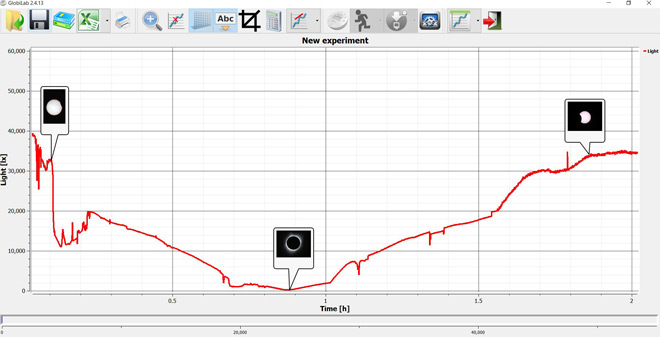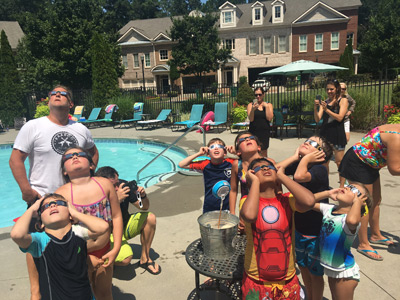Last week, on Monday the 21st the United States experienced a solar eclipse, the first recorded in the country for almost 100 years. During this total solar eclipse, the moon’s diameter appeared larger than the sun’s, blocking all direct sunlight and transforming day into complete darkness.
The path of total eclipse touched 14 states, 16% of the area of the United States and a partial eclipse visible in all the other states. The event began on the Oregon coast as a partial eclipse at 9:06 a.m. (PDT) and ended later that day as a partial eclipse along the South Carolina coast at about 4:06 p.m. (EDT).

What better opportunity for budding young scientists to use the Labdisc to record a real and live scientific event!
Together with science students, the Globisens team and their US partner Boxlight – recorded the eclipse in Georgia and New York, with Globisens CEO, Dov Bruker recording in Mexico. Recording with the Labdisc in multiple locations of the eclipse allowed the young scientists to compare the eclipse duration and the lowest level of light as the eclipse traversed the continent.
In Johns Creek, Georgia a group of students from Fulton County Schools setup a Labdisc using the Labdisc plastic rod and a bucket of sand to stabilize it. They recorded the results over a 2-hour period. The eclipse started with a recorded 40,000 lux and decreased to only 256 lux and then increased back to around 35,000 lux when the eclipse concluded. The students also used a home-made box projector to view the shadow created by the eclipse.


As the sensor-triggered street lights turned on during the eclipse, our young students made several additional observations regarding the natural world around them. They noticed that the birds stopped chirping, and the cicada’s (large insect) and crickets started making noise, which they normally do only after sunset.



